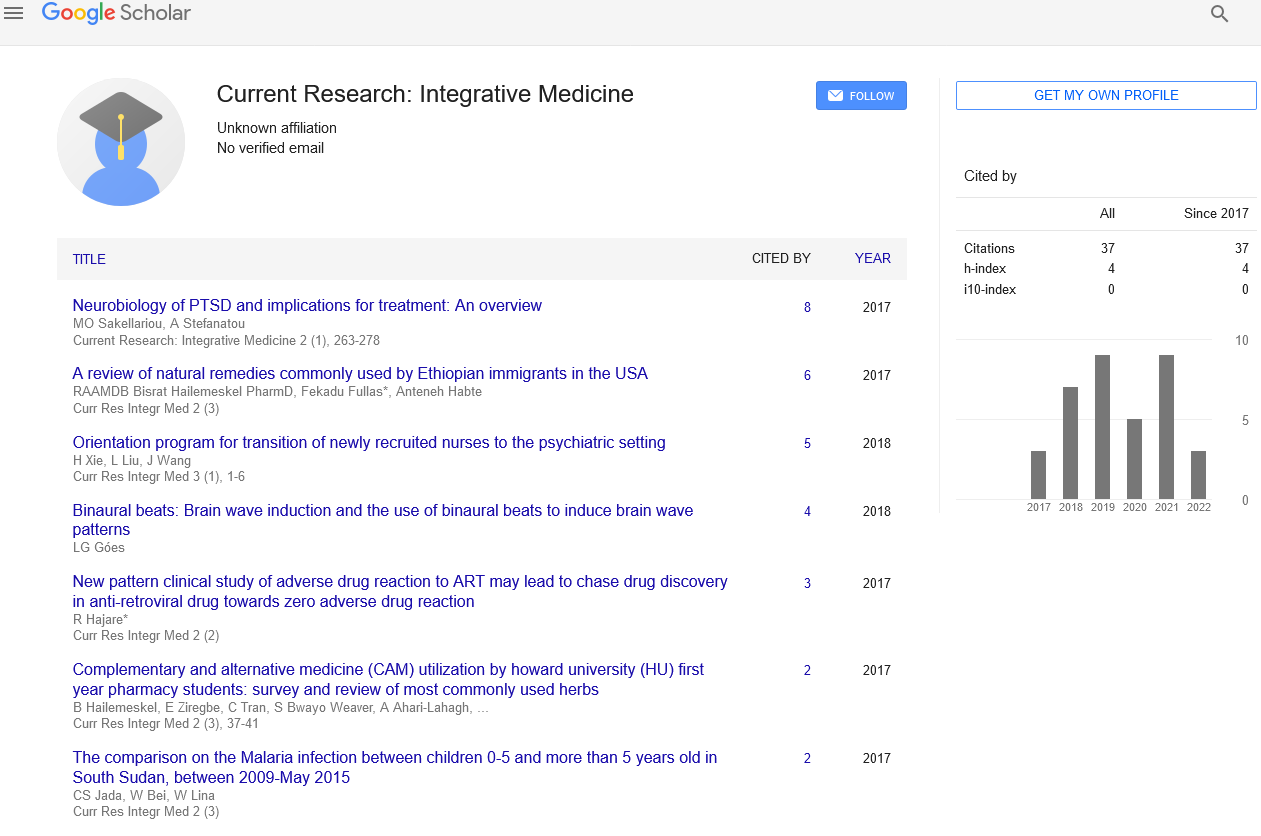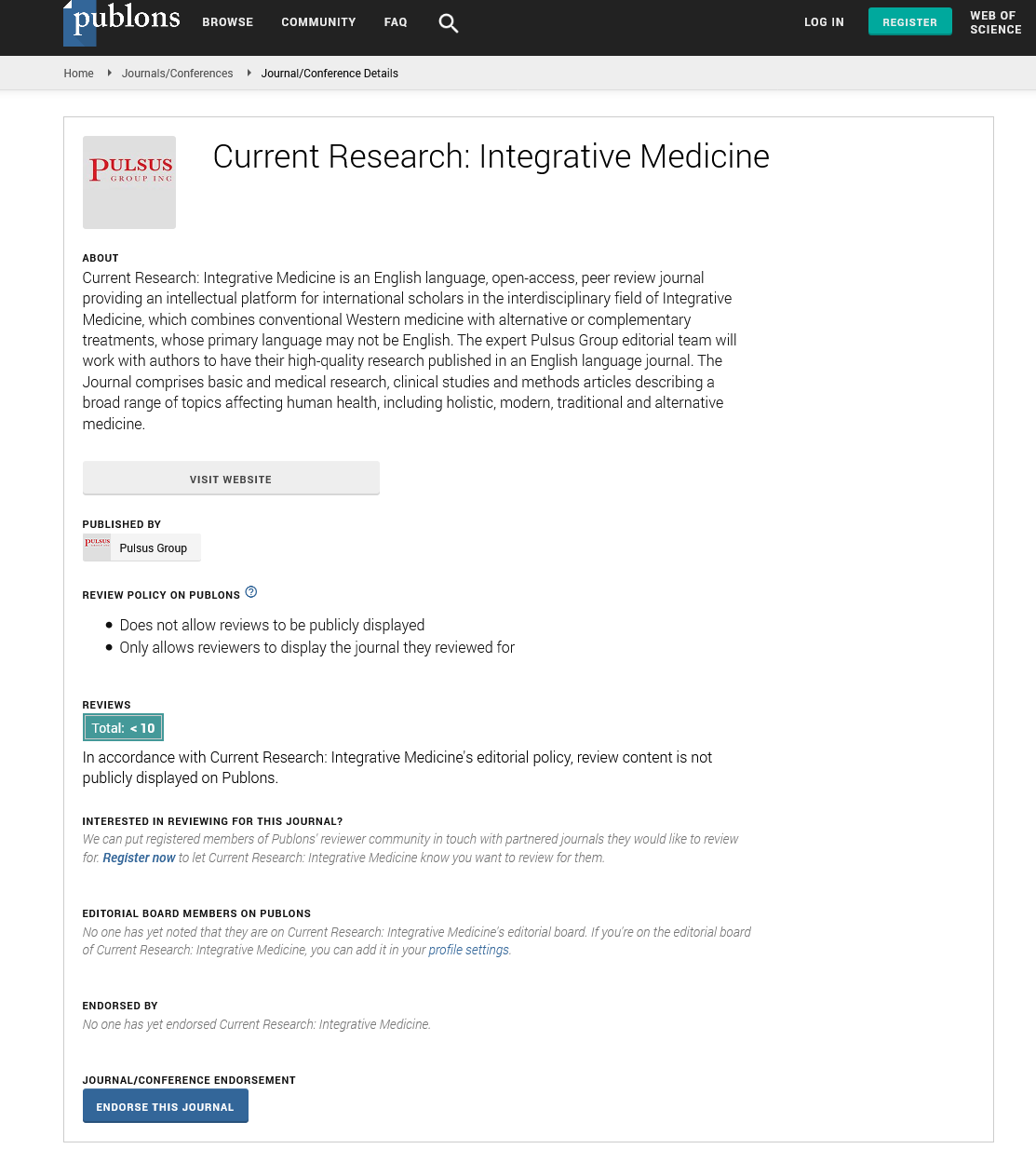Brown rice: An ideal choice for healthy diets
Received: 02-Aug-2021 Accepted Date: Aug 16, 2021; Published: 23-Aug-2021
Citation: Samad AFA. Brown rice: An ideal choice for healthy diets. Curr Res Integr Med. 2021;6(2):11-12.
This open-access article is distributed under the terms of the Creative Commons Attribution Non-Commercial License (CC BY-NC) (http://creativecommons.org/licenses/by-nc/4.0/), which permits reuse, distribution and reproduction of the article, provided that the original work is properly cited and the reuse is restricted to noncommercial purposes. For commercial reuse, contact reprints@pulsus.com
Abstract
Rice is an essential food source for many Asian countries. The cereal is commonly consumed after polishing or whitening, and the polished grain is known a high glycemic food due to high starch content. The polished grain has the bran layer removed during the milling process which results in a loss of nutrients, dietary fiber, and bioactive components. Previously, a number of studies have reported that the bran layer which is commonly found in brown rice contained a wide spectrum of phytochemicals that are contributing to its various nutritional values. This paper will provide an overview on the phytochemicals and nutritional value of brown rice.
Keywords
Brown rice; Diet; Nutrition
Description
For centuries, the role of rice as a staple food in providing nutrition to populations has been well-recognized. Rice is planted in many countries with 90% production came from Asian regions. It has been reported that more than 110,000 varieties were discovered, however, Oryza sativa is the most widely grown [1]. Rice grain is commonly subjected to a series of processing stages such as drying, milling, and packaging before it can be consumed. The first step of the milling process involves the removal of the husk from the whole rice grain to obtain brown rice grain. The second step involves the removal of the outer bran layer to obtain the polished or white rice. The brown rice grain contains the outer bran layer with commonly brown color. This layer consists of pericarp, aleurone, subaleurone layer, and germ, which contain large amounts of nutrients and bioactive compound. Meanwhile, white rice mainly consists of endosperm (starch). Thus, the removal of bran layer resulted in loss of many essential nutrients. For instance, the milling of white rice from brown rice leads to the loss of certain vitamins and minerals particularly zinc, iron, niacin, and biotin [2].
The loss of beneficial phytochemicals occurs due to the high degree of milling process. Milling is an intermediate step in post-production of grain, which involve the process of grinding grain into flour or meal [2]. Therefore, by proper control of the degree of milling during rice processing, both the sensory quality and nutritional composition could be maximized. In brown rice, a low degree of milling (<2.7%) exhibits an ideal balance between sensory quality and retention of beneficial phytochemicals [3].
Nutritional value of brown rice
The phytochemical of brown rice was initially studied by Dutch Nobel prize scientist Christiaan Eijkman who reported the potential of brown rice and the story behind beriberi in humans in the previous centuries. Table 1 showed the comparison in nutritional value between brown rice and white rice [4].
| Nutrients | Brown rice | White rice |
|---|---|---|
| Protein (g/100 g) | 7.1-8.3 | 6.3-7.1 |
| Crude fat (g/100 g) | 1.6-2.8 | 0.3-0.5 |
| Carbohydrates (g/100 g) | 73-76 | 77-78 |
| Crude fiber (g/100 g) | 0.6-1.0 | 0.2-0.5 |
| Crude ash (g/100 g) | 1.0-1.5 | 0.3-0.8 |
| Energy (kcal) | 363-385 | 349-373 |
| Thiamine (mg/100 g) | 0.29-0.61 | 0.02-0.11 |
| Riboflavin (mg/100 g) | 0.04-0.14 | 0.02-0.06 |
| Niacin (mg/100 g) | 3.5-5.3 | 1.3-2.4 |
| Vitamin E (mg/100 g) | 0.90-2.50 | 0.075-0.30 |
| Nicotinic acid (mg/100 g) | 4.4-6.2 | 0.8-2.6 |
| Pantothenic acid (mg/100 g) | 0.66-1.86 | 0.34-0.77 |
| Ca (mg/100 g) | 10-50 | 10-30 |
| Na (mg/100 g) | 3.1-17.6 | 2.2-8.5 |
| K (mg/100 g) | 120-340 | 14-120 |
| Fe (mg/100 g) | 0.7-5.4 | 0.2-2.7 |
| Mn (mg/100 g) | 1.3-4.2 | 1.0-3.3 |
| P (g/100 g) | 0.17-0.43 | 0.08-0.15 |
| Zn (mg/100 g) | 1.5-2.2 | 0.3-2.1 |
Table 1: Nutritional composition between brown rice and white rice
In general, brown rice consist more nutritional value compare to white rice (Table 1). Even with the comparable carbohydrate and protein content between brown and white rice, brown rice has superior content of fat, minerals, fiber and bioactive compounds. Brown rice contains high unsaturated fatty acid; therefore, it can be a good source of healthy fatty acid for those who consumed rice as their main diets. On the other hand, minerals are important in maintaining good metabolism in human body. Minerals deficiency may lead to the malnutrition-related disease. Rice is not considered as food rich with minerals, however, when consumed as regularly as staple food, its can provide appreciable amount of minerals.
In brown rice, phenolic acids are the most abundance of phytochemicals. This class f phytochemicals are linked with diverse human health benefits including anti-inflammatory, anticarcinogenic, antiallergenic, hypoglycaemic, and antiatherosclerotic properties. In rice, phenolics are exist in three different forms; free, soluble-conjugated and bound forms. The dominant among these three is bound form. The germ and bran layers are believed to be source of the phenolic compounds. Another bioactive compound in brown rice includes γ-oryzanol, aminobutyric acid (GABA), α-tocopherol, and γ-tocotrienol. However, the concentration of these nutrients and bioactive compounds may vary depend on the variety and environmental factors.
Conclusion
It has emphasized that brown rice is considered to be a healthier choice than white rice. Brown rice is a whole grain because it’s undergone less processing steps, with the removal of husk and keeps the grain with bran layers and germ. Meanwhile, white rice is not a whole grain because its husk, bran, and germ are all removed during processing steps. Therefore, brown rice may attract more attention from consumers who are health-conscious. Besides, due to lower starch content, brown rice becomes a popular choice among diabetes patients. Future work should be planned to screen any phytochemicals in brown rice that could be used as dietary therapy for certain disorder.
REFERENCES
- Fukagawa NK, Ziska LH. (2019) Rice: Importance for global nutrition. J Nutr Sci Vitaminol (Tokyo). 2019;65: S2-s3.
- Oghbaei M, Prakash J. (2016) Effect of primary processing of cereals and legumes on its nutritional quality: A comprehensive review. Cogent Food Agriculture 2016;2(1):1136015.
- Liu L, Guo J, Zhang R (2015) Effect of degree of milling on phenolic profiles and cellular antioxidant activity of whole brown rice. Food Chem. 2015;185:318-325.
- Saleh ASM, Wang P, Wang N. Brown rice versus white rice: Nutritional quality, potential health benefits, development of food products, and preservation technologies. Comprehensive Rev Food Sci Food Safety. 2019;18(4):1070-1096.






